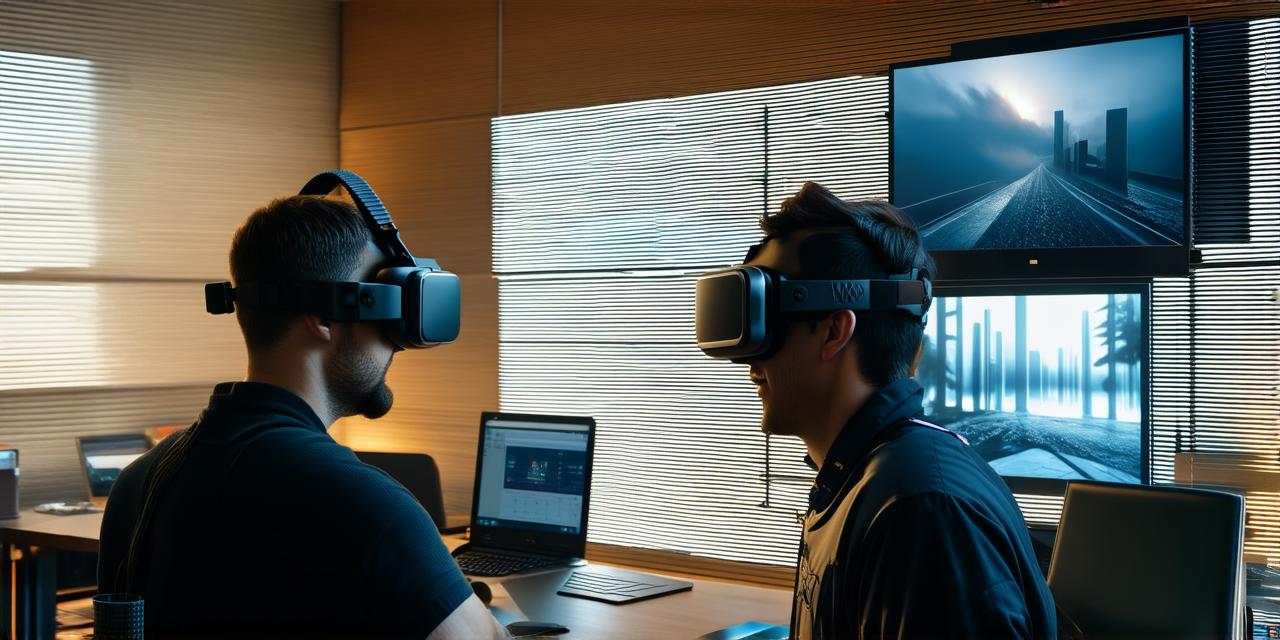1. Define Your Project Scope and Objectives
Before starting any VR project, it is crucial to define the scope and objectives of the project. This includes identifying the target audience, defining the goals of the VR experience, and determining the resources required to complete the project. By defining these elements early on, you can create a clear roadmap for your development pipeline and ensure everyone involved in the project is aligned with the same vision.
For example, the team at Beat Games knew exactly what they wanted to achieve with their VR game “Beat Saber.” They aimed to create an immersive, challenging, and fun experience that would appeal to gamers of all ages. By defining these objectives early on, Beat Games was able to build a development pipeline that focused on creating a high-quality VR experience that met their goals.
2. Build a Strong Team
Building a strong team is critical for any successful project, including VR development. Your team should have a mix of skills and expertise, including designers, developers, and testers. By working together, your team can ensure that the VR experience is designed with both functionality and user experience in mind.
The team at Oculus is an excellent example of a strong VR development team. They are known for their work on the Oculus Quest, which has been praised for its ease of use and portability. The team at Oculus worked closely together to create a seamless VR experience that could be used anywhere, making it accessible to a wider audience.
3. Use Agile Development Methodologies
Agile development methodologies are an effective way to optimize your VR development pipeline. These methodologies focus on iterative development, where features and functionality are developed in small increments and tested regularly. This approach allows for quick feedback from users, which can be used to make improvements to the VR experience before it’s released.
Scrum is a popular framework that emphasizes collaboration, flexibility, and customer satisfaction. By using Scrum in their development process, companies like Unity have been able to deliver high-quality VR experiences quickly and efficiently.
4. Use Cloud-Based Tools and Services
Cloud-based tools and services can help optimize your VR development pipeline by providing access to powerful computing resources that would otherwise be expensive or difficult to obtain. These resources can be used for tasks like 3D modeling, animation, and testing.
Unity Cloud Build is an example of a cloud-based tool for VR development. This service allows developers to build and deploy their VR experiences quickly and easily, without the need for expensive hardware or software. By using Unity Cloud Build, companies like A-Frame have been able to deliver high-quality VR experiences with minimal resources.
5. Optimize Your VR Development Environment
Optimizing your VR development environment can help reduce development time and improve the quality of your VR experience. This includes optimizing your hardware, software, and networking infrastructure to ensure that everything runs smoothly.
Reducing motion sickness in VR is an excellent example of an optimization technique. Motion sickness can be a significant issue for some users, leading to nausea and discomfort. By using techniques like smoothing motion and adjusting field of view, developers can create a VR experience that’s more comfortable and enjoyable to use.
Conclusion
Optimizing your VR development pipeline is crucial for delivering high-quality, engaging content quickly and efficiently. By defining your project scope and objectives, building a strong team, using agile development methodologies, leveraging cloud-based tools and services, and optimizing your VR development environment, you can create a successful VR pipeline that meets your goals and exceeds user expectations.
Virtual Reality (VR) technology is rapidly evolving and becoming more prevalent in various industries. To ensure success in this exciting field, it is essential to have a well-optimized VR development pipeline. By following the best practices outlined in this article, companies can create high-quality, engaging VR experiences that meet their goals and exceed user expectations.
